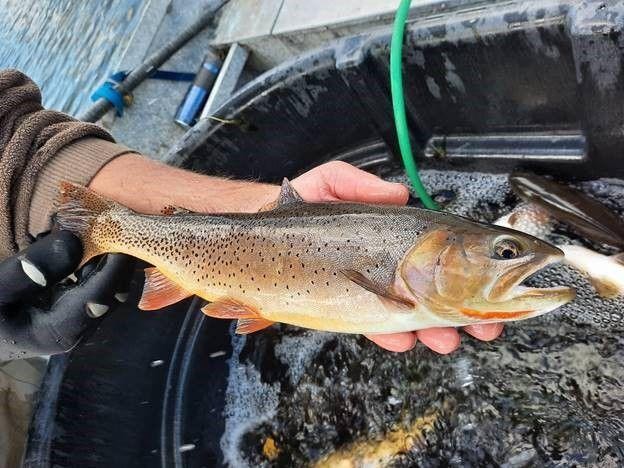If you’ve thought that fishing has been good for trout on the South Fork of the Snake River this year, a recent survey helps to explain why: The fish numbers are at record levels.
Idaho Fish and Game’s recent fall electrofishing survey estimates trout densities to be 6,302 fish per mile in the upper river.
“The most important take-home message from these surveys is that trout abundance is high in the (South Fork of the Snake River),” said Patrick Kennedy, Fish and Game fisheries research biologist, in a news release. “The total trout estimate is higher than ever estimated at Conant, since 1982.”
The 6,000 fish per mile number puts the South Fork in elite company.
“Other rivers in the Western U.S. also host estimates of trout per mile in the thousands, but few boast estimates higher than 5,000 trout/mile,” Kennedy said. “Within Idaho, the South Fork Boise, Big Lost and Henry’s Fork rivers boast some of our highest abundance estimates, but none have exceeded 6,000 fish per mile.”
What adds to the unusual character is that unlike other rivers with high concentration of trout, the upper South Fork is not supplemented with hatchery trout, he said.
“The exceptional wild trout population in the South Fork highlights the extremely high productivity observed in recent years in the river and the potential this tailwater fishery possesses,” Kennedy said. “For anglers, high abundances of trout should ensure that fishing will remain great into next year and beyond.”
Regional fisheries manager Brett High said “several years of heavy snowpack and good stream flows have been good for fish on the South Fork.”
Fish and Game surveyed two locations along the South Fork — the Conant monitoring reach and near the Lorenzo boat ramp. The Conant section topped 6,000 trout per mile and the Lorenzo location 2,650 trout per mile. The Lorenzo numbers were higher than the 10-year average of 1,889 trout per mile. The 10-year average for the Conant section is 4,710 trout per mile.
One key purpose of the annual fall survey is to see how well native Yellowstone cutthroat trout are doing, particularly in relation to nonnative rainbow trout.
Fish and Game management goals focus on protecting the “genetic integrity and population” of cutthroat in the river and reducing rainbow trout abundance to less than 10 percent of the trout in the upper river, Kennedy said. The recent survey found that rainbow trout make up 43.1 percent of the trout in the Conant reach.
“Rainbow trout still comprise more of the population in the upper South Fork than called for in the management plan,” Kennedy said. “Rainbow trout, which are the biggest threat to cutthroat trout through competition and hybridization, continue to provide management challenges.”
Fish and Game’s James Brower said the department works to limit rainbows in a few different ways. There is no limit on harvesting rainbows on the South Fork and catching rainbows is encouraged with an angler incentive program. With that program, several hundred rainbows and rainbow hybrids are tagged with money rewards of $50 to $1,000.
“They have done some and will continue to do some mechanical removal with the electrofishing program,” Brower said of other tactics to reduce rainbow numbers. “They scan those fish so they make sure they’re not taking any of the money-tagged fish from the incentive program.”
Rainbows removed from the river are planted in local fishing ponds and elsewhere.
Brower said the South Fork also has an extensive weir program on several of the nursery streams that allows them to exclude rainbow trout from spawning.
The other trout found in the South Fork survey were brown trout, making up more than 1,200 of the total fish per mile. Because brown trout are fall spawners, they don’t pose a hazard of hybridizing with cutthroats.



